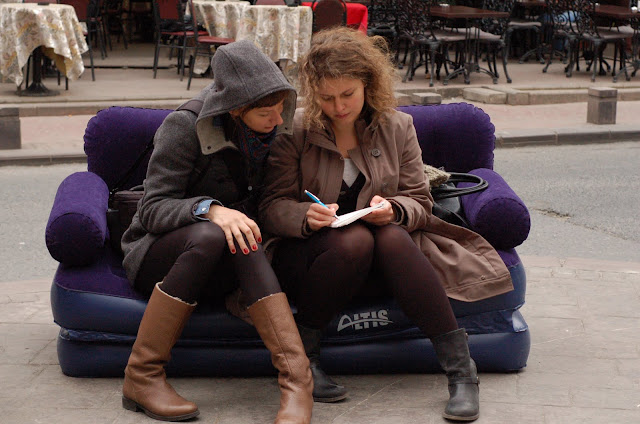Whenever you ask an average Istanbulite which part of the city is the roughest and the most dangerous, most will definitely exclaim: Tarlabaşı!
Writing about this controversial neighbourhood is a bit of a challenge. It’s easy to get stuck in generalisations and pompous, overly sensitive discourse, with an obligatory touch of gloom.
This still stigmatised and no-go-after-dark neighbourhood is populated by different ethnic groups, like Kurds and Roma, as well as illegal immigrants, mostly from Africa , Afghanistan Iraq Istanbul
Still beautiful yet run-down buildings and under age street vendors are the first and therefore a bit superficial impressions of Tarlabaşı. However, you won’t see the infamous transvestites, prostitutes and drug dealers strolling down these streets in the day light. The most striking feature of this jumbled area is poverty and cultural melange.
In only half of the century Istanbul
1960s witnessed mass migration from the rural, south-east region of the country. Poor, blue-collar workers occupied vacated houses, once owned by Greek, Armenian and Jewish families. This picture has recently been enriched by a growing number of foreigners, with groups of Erasmus students which made the housing prices go through the roof. Could Tarlabaşı become a ‘new Cihangir?’
Controversial governmental Tarlabaşı gentrification project (Tarlabaşı Yenileniyor) is being criticized by many, including some of the local NGOs and the neighbourhood’s inhabitants. Official website presents the project as a vital step to transforming the city into a resident friendly, renovated living space as well as protection of its architecture heritage. The truth is that Tarlabaşı’s 40 thousand population will have to be relocated to the outskirts of the city, which will severely affect people's livelihoods and social ties.
Who are the residents of Tarlabaşı? And do they feel at home here?
 |
 |
I have a workshop here, ‘demir doğrama atölyesi’ (blacksmith workshop) and my flat is just underneath. |
 |
When I think about Istanbul I think about poetry. We're living in the city that is like a poem. |
 |
Kubilay: I live in Çapa and in the evenings I study economy at |
 |
I have been living in |
 |
To me Istanbul means disaster and traffic. You waste so much time commuting from one place to another. |
 |
| There's something unique about Tarlabaşı though. Look at this laundry, hung between the houses. I like it, it’s interesting... |
 |
I've been warned about Tarlabaşı many times, that I may get robbed or something, but nothing like this has ever happened. |
 |
Bilal: I am from Batman and I have lived in |
 |
| First thing that comes to my mind when I think about Tarlabaşı is colourful life, different people of different backgrounds, density. |
 |
| This area is somewhat like Texas. Anything can happen anytime here. I may be asked to show my ID by the police just because I am Kurdish. |
 |
When you say you’re not Kurdish people don’t believe you and when you say you are, you seem suspicious and are immediately accused of something. |
 |
When Hrant Dink was shot dead I was in Tarlabaşı and went to the protest straight away. I go to protests every Saturday. |
 |
| Şükrü: I've been living in Tarlabaşı for 16 years now. I came here from Mardin. There's so many people from Mardin living here. |
 |
What can I say? I am not happy living here. We had to migrate, because our village was resettled by the security forces, due to civil war between PKK and the army. |
 |
| The only thing I like here is my workplace. |
 |
| Şükrü: She's my relative. |
 |
| Şükrü: Yes. I also feel that I don't belong here, but the good thing is that I've met so may good friends in Tarlabaşı . |
 |
| Discrimination? Forget about Tarlabaşı, it exists everywhere. |
 |
| Gulçin: I am from Izmir. Living in Istanbul is nice, but it's so crowded here. |
 |
| The most colourful part of the city is Taksim. |
 |
| Tarlabaşı is quite cosmopolitan. There are so many people from different regions of Turkey living here. |
 |
| I think about the crowd and poor people whenever I think about Istanbul. |
 |
| It's been 8 years since I came here, as a bride from Mardin. |
 |
| What else could I say? Only sad stories about the city... |
 |
| Our favourite parts of the city are Fatih and Eminönü. |
 |
| Unfortunately there's always something to do, so we don't really have much time to see the city. |
 |
 |
| I arrived here from Isparta and I've been here for over 30 years. |
 |
| What can I say about Istanbul? I really don't know. |
Many many thanks to Sinan and Neco!!!

































